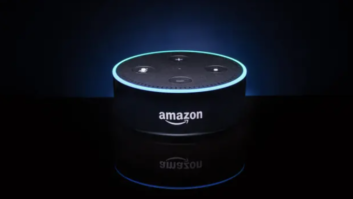NEW YORK — Chocolate or vanilla?
A new report by behavioral marketing platform SmarterHQ shows that consumers are evenly divided over Amazon Alexa- and Google Assistant-infused smart devices.
According to the survey, which explored the omnichannel shopping habits of 1,000 adults, Alexa barely edges out Google Home products in preference and usage (44.4 % to 43.7%), with Apple HomePod coming in a distant third at 11.9%.
Perhaps more remarkable: American households now have an average of two Internet-accessible devices, while a startling 53% of consumers own more than three. What’s more, the likelihood of ownership increases with the number of kids at home; for example, families with three or more children are 35% more likely to have home assistants, while those with fewer offspring resort to mobile sites and apps for their online needs.
But digital assistants aside, the big takeaway from the SmarterHQ study is that the multitude of in-store and online shopping options has created something of a “consumer identity crisis” for retailers, making it extremely difficult to attract and maintain brand loyalty.
“Consumers view all the channels they shop on — online, in-store, through social media, or via assistant home devices — as a single point-of-contact with a brand, yet many retailers still treat these channels as disparate systems that aren’t connected,” said CEO Michael Osborne. “This puts pressure on marketers to make the brand experience a consistent one, no matter the channel. Without a marketing strategy that includes customer identity resolution, brands risk losing buyers to the more targeted and personalized campaigns of their competitors.”
Among the survey’s other findings:
- Shopping online doesn’t necessarily mean purchasing online. People prefer omnichannel fulfilment, which pairs the convenience of shopping online with purchasing in-store. In fact, fully 90% of respondents have browsed online and purchased in-store (“web-rooming”), turning the old showrooming fear on its ear.
- Shop online, return in-store. The majority of online shoppers (55%) prefer bringing their returns to a store vs. mailing them back (45%), although returning in-store decreases as age increases.
- Stay-at-home parents are itching for the strip mall. Eighty percent of stay-at-home parents prefer to shop in-store, if only to get out of the house.
- Immediacy of shopping in-store is key. Among brick-and-mortar shoppers, another 80% said they prefer the in-store experience because they can leave with the product in hand that day.












